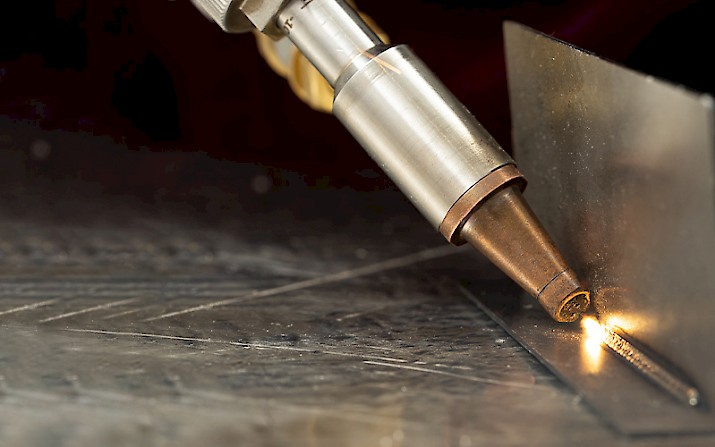Welding WPS: Common Mistakes to Avoid and How to Correct Them
Welding WPS: Common Mistakes to Avoid and How to Correct Them
Blog Article
The Ultimate Overview to Welding WPS Procedures: A Comprehensive Overview for Welders
In the complex world of welding, Welding Procedure Requirements (WPS) work as the foundation of making sure high quality, uniformity, and security in welding procedures. Understanding the nuances of creating, implementing, and keeping an eye on WPS procedures is important for welders aiming to raise their craft and satisfy sector requirements. As we delve right into the various parts of a WPS and explore the details of qualification and accreditation, we will certainly uncover the crucial role these procedures play in the realm of welding. Allow's get started on a journey to unwind the intricacies and importance of WPS procedures in welding practices.
Significance of WPS Procedures
Understanding the significance of Welding Treatment Requirements (WPS) procedures is important for making sure the top quality and integrity of welded structures. WPS procedures function as a roadmap for welders, laying out the required steps, parameters, and materials required to accomplish an audio weld. By adhering to WPS standards, welders can make certain uniformity in their job, bring about structurally sound and dependable welds.
One of the main factors why WPS procedures are necessary is their function in preserving weld top quality and honesty. Following the defined welding criteria and strategies laid out in the WPS helps prevent issues such as porosity, splitting, or insufficient blend, which can jeopardize the strength and durability of the weld.

Components of a WPS
A Welding Procedure Requirements (WPS) generally consists of crucial components that information the details demands for executing a weld, making certain uniformity and high quality in the welding process. The essential parts of a WPS consist of crucial variables such as base steels, filler metals, preheat and interpass temperature levels, welding procedures, protecting gases, welding placements, and post-weld heat therapy demands.
Base steels refer to the products being joined, while filler steels are utilized to fill up the gap in between the base steels throughout welding. Preheat and interpass temperatures are crucial for managing the heat input and stopping issues like cracking or distortion. The welding process describes the details technique to be made use of, whether it's gas metal arc welding (GMAW), protected steel arc welding (SMAW), or another method. Securing gases protect the weld swimming pool from atmospheric contamination. Welding settings specify the orientations in which welding can be carried out. Post-weld warmth treatment may be needed to alleviate stress and anxieties and improve the weld's residential properties. A comprehensive understanding of these parts is essential for creating a reliable and extensive WPS.

Credentials and Accreditation
Having established the important elements of a Welding Treatment Specification (WPS), the focus now moves in the direction of the critical elements of credentials and qualification in welding practices.

Certification, on hop over to here the various other hand, is the formal acknowledgment of a welder's qualifications by a relevant certification body or company. Welding certifications are normally based on the specific welding procedures, products, and positions a welder is qualified to collaborate with. Holding a legitimate welding accreditation demonstrates that a welder satisfies sector standards and is experienced to perform welding tasks to the needed specs.
Creating a WPS
To develop a Welding Treatment Specification (WPS) that meets sector requirements, mindful consideration of welding processes, materials, and operational parameters is important. The very first step in developing a WPS is to identify the welding procedure to be used, such as gas steel arc welding (GMAW) or shielded steel arc welding (SMAW)

Carrying Out and Monitoring WPS
Upon finalizing the comprehensive Welding Treatment Specification (WPS) that thoroughly details welding try these out procedures, materials, operational criteria, and quality control procedures, the focus changes to successfully executing and monitoring the well-known treatments. Application involves making certain that all welders entailed in the task recognize with the WPS and follow it carefully during the welding procedure. This requires providing ample training and supervision to guarantee adherence to the defined procedures. Monitoring the WPS involves continual oversight to validate that welding activities line up with the recorded specs. Assessments, screening, and quality control steps are important elements of the surveillance procedure to identify any type of concerns or variances promptly. Regular audits and evaluations of the welding treatments help in keeping uniformity and quality throughout the project. Effective execution and monitoring of the WPS are vital for ensuring the stability, strength, and safety of the welded joints, ultimately adding to the overall success of the welding job.
Final Thought
To conclude, understanding and complying with Welding Procedure Specifications (WPS) is crucial for welders to make certain quality, consistency, and safety and security in their job. By understanding the elements of a WPS, acquiring appropriate certifications and qualifications, creating thorough treatments, and executing and monitoring them efficiently, welders can boost their skills and effectiveness in welding techniques. Following WPS procedures is crucial for producing top notch welds and conference sector standards.
In the elaborate globe of welding, Welding Treatment Specifications (WPS) offer as the foundation of making sure quality, consistency, and safety and security in welding operations. The welding process describes the certain technique to be utilized, whether it's gas steel arc welding (GMAW), secured metal arc welding (SMAW), or one more approach.To develop a Welding Procedure Spec (WPS) that satisfies market criteria, careful factor to consider of welding procedures, materials, and operational criteria is necessary. The first step in creating a WPS is to determine the welding process to be used, such as gas metal arc welding (GMAW) or shielded steel arc welding (SMAW)Upon settling the thorough Welding Treatment Requirements (WPS) that meticulously details welding processes, materials, operational specifications, and top quality assurance steps, the emphasis changes to efficiently implementing and monitoring the recognized treatments.
Report this page